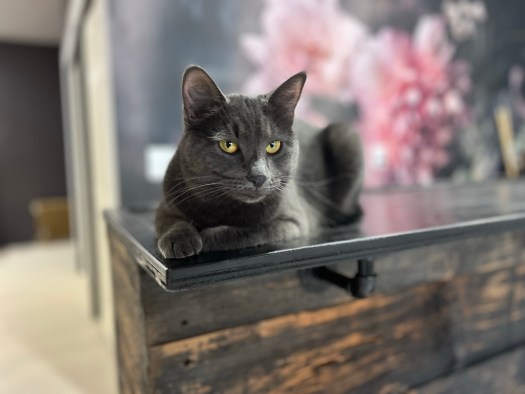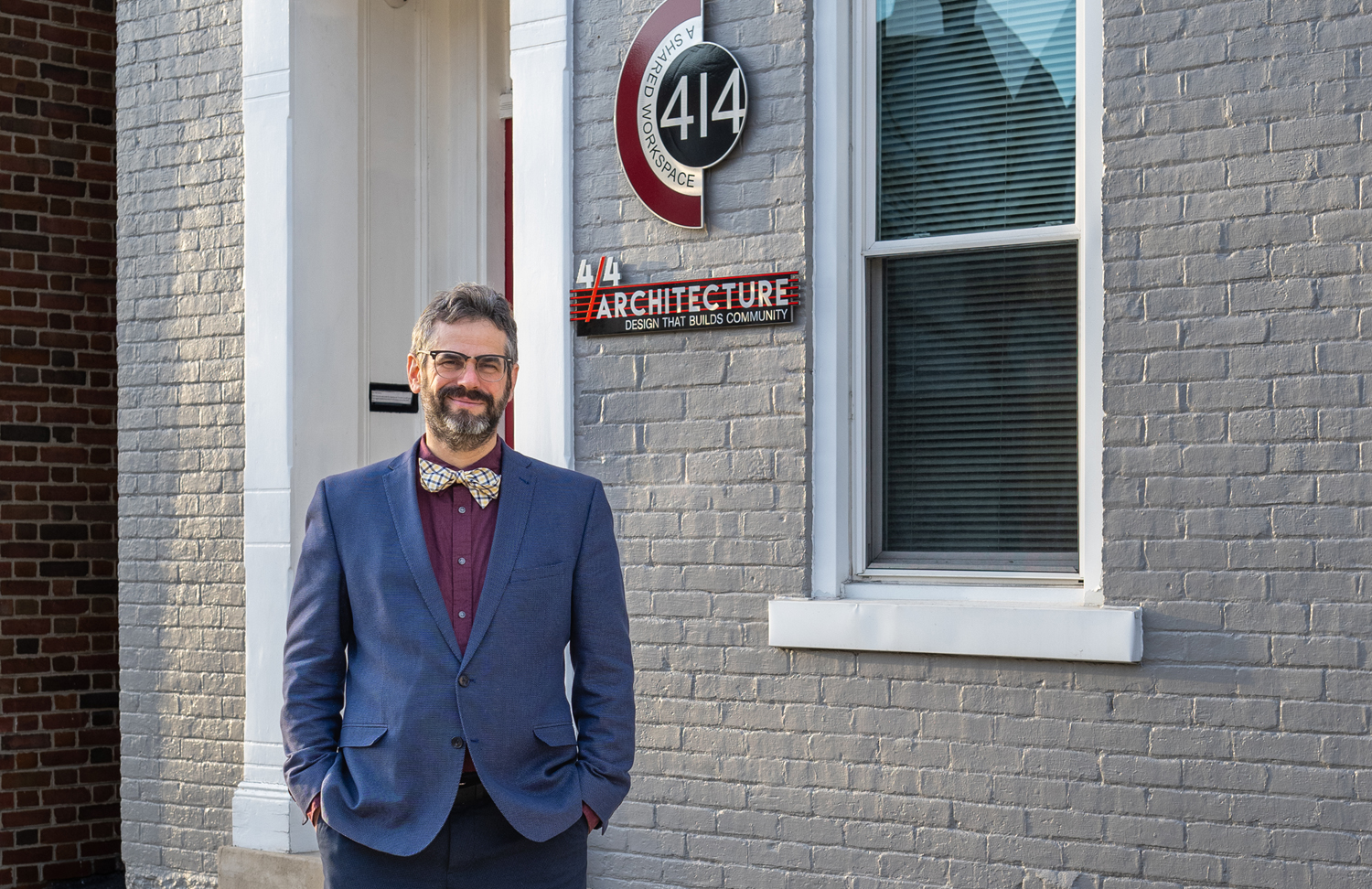
Introduction
In 2019, Brad and Allison were searching for a building they could repurpose into a bar and bistro. It was a dream for the couple. They were already successful business owners, and Brad was also an expert in the food service industry. Then, COVID hit.
Despite their plans being temporarily shelved, they were still in the habit of spotting “Sale” signs on buildings with potential. Brad noticed one such building in Hellertown. But when they walked in, instead of visualizing their future business, Brad immediately visualized their future home – and a new dream was born.
The Building
The building, a former auto dealership on busy Main Street in Hellertown, PA, is a two-story mixed-use building that is more than 120 years old. The first floor includes 1,500 square feet of retail space, which was previously occupied by Organic Mattress Store, and 1,560 square feet of residential space, which was rented out as an apartment. The second floor included 4,000 square feet of open warehouse space.

Prior to spotting this diamond in the rough, Allison and Brad were renting a townhome in rural Pennsylvania. It was not a great space for their lifestyle and routines. They had always loved the idea of living in a loft-style home, but never came across the right opportunity. Now, they were determined.



Allison and Brad first approached their financial consultant, Howard Lieberman, to discuss the potential purchase. Howard is a Managing Partner at Business and Community Financing Solutions (BCFSOL). Howard first met Allison when she was working to purchase her salon, providing business financial planning, financing, and ongoing business management consulting services. After determining this property might be a good fit, Howard sent the couple to 4/4 Architecture.
“The loft adaptive reuse of the Hellertown building required significant planning to secure zoning approvals, meet code requirements, and align with Allison and Brad’s vision,” Howard said. “We chose 4/4 Architecture because they are local, the owner is directly involved, and they are hands on.”
4/4 Architecture assisted Allison and Brad with due diligence by surveying the building and conducting a structural review. During this process, 4/4 documented existing conditions to gain a thorough understanding of the property. 4/4 also identified changes necessary to obtain zoning variances to turn the second floor into a residential space, and identified building code provisions that might come into play along the journey.
“Good architectural design happens when we work as a team”
Gary Lader, Principal, 4/4 Architecture
The Vision
Some clients rely heavily on an architect to develop a design concept; others have a well-established vision. During our initial design meetings, 4/4 quickly found that Allison and Brad were the latter type of client. They have a self-described “eclectic taste” in design, appreciating many periods and styles of architectural design; namely, Frank Lloyd Wright, mid-century modern furniture, and modern art.
“Being creative people, we came in with a vision and 4/4 Architecture allowed us to develop it as we imagined it, while protecting the functionality of the design,” Allison said.
Despite the client having a clear picture of the end goal, it still took some exploration to get there. That’s where 4/4’s team shined. They proactively identified potential challenges, proposed workable solutions, and worked in an iterative process to identify the path forward.
“An essential part of what we do as architects is translating a client’s vision into a set of documents that can be realized by a contractor,” Gary explained. “Part of this process is understanding constraints and close coordination with partners.”
One of the primary challenges was streamlining the flow of the loft. In designing the plan, 4/4’s team minimized unnecessary walls by pairing areas that required privacy (bathrooms) with storage areas (closets). They also leveraged visual cues to divide the space without closing it off, such as the industrial shelving to outline the master bedroom, and the island to divide the kitchen from the entertainment area.
“The team helped us make the space more optimal by suggesting storage options and improving the flow,” Allison added.




The Loft Adaptive Reuse
Brad and Allison received their occupancy permit and moved into their loft in October 2022.
What made this renovation process a success is that it was a true partnership. Allison and Brad have a strong eye for style, color, and materials – so 4/4’s team stepped back and gave them the flexibility to bring this creativity to the project. In contrast, the couple had no experience with architecture, renovations, or residential code requirements. 4/4’s team took the lead in helping them leverage the space, meet code, and be conscious of the project budget.
“Good architectural design happens when we work as a team,” Gary said. “4/4’s design approach is fueled by our humanistic philosophy and innate curiosity. We get to know our clients and building users – beyond the functional scope of the building project – and design spaces that respond to their needs in a way that promotes health, joy, and overall well-being.”






While there are still some outstanding tasks, Allison and Brad couldn’t be happier with the results of the loft adaptive reuse so far.
“I would absolutely recommend working with 4/4 Architecture,” Allison said. “They have a lot to offer any project because of their willingness to listen to and work with their clients to achieve the project goals.”
Could you use a design expert to help you achieve your vision? Contact 4/4 at gary@44architecture.com to schedule a consultation today!

Image courtesy Allison and Brad








